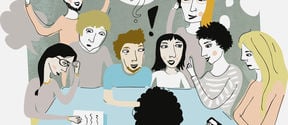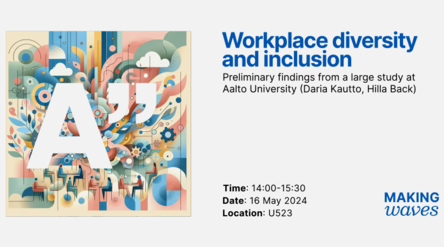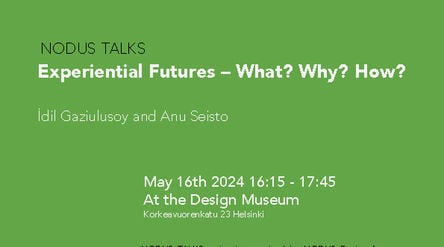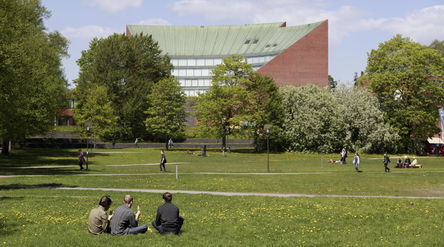Green Minds, Healthy Hearts - Social Sustainability Symposium May 30, 2023
Find the original landing page here.
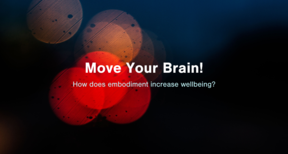
In recent years we have begun to understand better how our body and our mind are connected. More expert knowledge has emerged to remind us how vital the connection is wellbeing. Meanwhile, fragmentation, information overload, hurry, and stress have raised concerns about the functioning and wellbeing of our brain.
Anders Hansen, chief physician at the Karolinska Institutet in Stockholm, has been researching the brain's wellbeing for years and has also written non-fiction books on the subject. According to Hansen, several studies emphasize the amount of protection exercise offers against mental illnesses, increasing life years. In the book The Real Happy Pill, Hansen states that exercise is the most important thing we can do for ourselves and our brain.
When discussing wellbeing of the mind and brain, essential issues are memory difficulties as well as attention and concentration disorders such as varying degrees of neuropsychological symptoms. These challenges can be dealt with the aid of movement. For example, according to research, moving before a study session or the workday can significantly improve concentration and memory.
Researchers at the University of Southern Australia (UniSA) have reached the same conclusion in their recent literature review. They looked into exercise as a treatment for mental health problems and found that exercise has such a great impact on our wellbeing that it could treat anxiety and depression even better than therapy and medicine. The researchers emphasize that exercise should be part of primary, not just complementary, forms of treatment. Also, Finnish national current care guidelines (Käypä Hoito) list exercise as part of the holistic treatment in the prevention and treatment of depression and anxiety disorders.
So how should we move? What kind of exercise would best support the wellbeing of the mind? According to the researchers at UniSA, different kinds of sports have different physiological and psychosocial effects. For example, yoga relieves anxiety and gym training eases depressive symptoms. Since the studies have been carried out in different ways, it is difficult to compare them. So, perhaps the most important thing is just to start moving!
Does this mean that we all now need to take up exercise, join a sports club or buy running shoes to keep our brain healthy? No, it does not.
People tend to have a stereotypical idea of what movement and exercise means. Sometimes exercise is recommended as a treatment in a way that can even increase anxiety, and by no means encourages activity. Of course, it's only positive if the fiery sneakers and jolly groups inspire and encourage one to get going. Exercise is undeniably healthy. But even a small amount of movement can refresh the brain and enrich thinking.
It is time to start thinking about movement in a broader concept. Movement is much more than exercise. Listing goals, challenges, and demands is perhaps not the best way to increase wellbeing through movement. Physicality and embodiment should be seen more versatilely as a part of our everyday life. Why not think about how movement and embodiment can be part of, say, an everyday meeting? Of course, encouraged in ways that make no-one feel embarrassed. And how could embodiment be made a normal part of lectures and learning?
Embodied learning is an interesting theoretical issue, but its potential is still unrecognized and underutilized in higher education. Embodied learning can be broadly defined as learning in which learners are holistically engaged and intertwined with their material and social environment. Physical movement is an essential part of this learning approach.
In practice, this could mean both orchestrated and naturally occurring embodied learning in teaching situations. Movement can be instructed through use of various technological tools, arts-based activities, drama, images, or music. The spectrum of study methods is already today quite broad in primary school, but embodied learning could be used more in universities and among adult learners as well.
Aalto University has joined the Students on the Move program and the Mobile University Member projects. The goal of is to increase better coping and to improve the ability to study, create stronger inclusion and a closer sense of community at the university. This would also help in achieving better learning results. New services have been developed, including local physical activity sessions, the Break Pro break exercise application, live stream sessions, as well as break exercise videos.
The Aalto community also has plenty of movement-enducing services available on campus. The newest of these is the Wellbeing Route. This path invites people to let go for a moment and focus on the walk and the themes that emerge: observing emotions, fostering the relationship with nature, physicality, calmness, and moderation.
Along with the traditional (of course, important) services emphasizing physical activity, a more innovative approach is needed to bring embodiment to lectures and meetings. Teaching situations are often conventional and static: people tend to sit during lectures. How to change this?
Technology could help to increase the amount of movement. Bringing versatile embodiment into the university world could support wellbeing in many ways. In addition to learning and deepening knowledge, embodiment can link together emotions, body, experiences, and creativity.
Fascinating things happen in our brains when we move. According to Anders Hansen, the brain material softens and brings plasticity to the brain. In addition, new brain cells are born. Brain scientist Minna Huotilainen sometimes holds brain lectures in spinning halls. This makes one wonder why we still sit tight in lecture halls and meeting rooms around the world – when we are supposed to learn and create new things.
Ahdistuneisuushäiriöt. 2019. Käypä hoito -suositus. Suomalaisen Lääkäriseuran Duodecimin, Suomen Psykiatriyhdistys ry:n ja Suomen Nuorisopsykiatrisen yhdistyksen asettama työryhmä. Helsinki: Suomalainen Lääkäriseura Duodecim. Viitattu 26.3.23.
Anttila, E. 2018. The potential of dance as embodied learning. In Proceedings of a body of knowledge – _embodied cognition and the arts conference, USA (Vols. 1–8).
Christiansen, L., Beck, M. M., Bilenberg, N., Wienecke, J., Astrup, A., & Lundbye-Jensen, J. 2019. Effects of exercise on cognitive performance in children and adolescents with ADHD: potential mechanisms and evidence-based recommendations. Journal of clinical medicine, 8(6), 841.
Erickson, K. I., Voss, M. W., Prakash, R. S., Basak, C., Szabo, A., Chaddock, L., ... & Kramer, A. F. 2011. Exercise training increases size of hippocampus and improves memory. Proceedings of the national academy of sciences, 108(7), 3017-3022.
Hansen, A. 2017. The real happy pill - Power up your brain by moving your body. Skyhorse publishing.
Jusslin, S., Korpinen, K., Lilja, N., Martin, R., Lehtinen-Schnabel, J., & Anttila, E. 2022. Embodied learning and teaching approaches in language education: A mixed studies review. Educational Research Review, 100480.
Schuch, F. B., Vancampfort, D., Firth, J., Rosenbaum, S., Ward, P. B., Silva, E. S., Hallgren, M., Ponce De Leon, A., Dunn, A. L. & Deslandes, A. C. 2018. Physical activity and incident depression: A meta-analysis of prospective cohort studies. American Journal of Psychiatry 175 (7), 631–648.
Singh, B., Olds, T., Curtis, R., Dumuid, D., Virgara, R., Watson, A., ... & Maher, C. 2023. Effectiveness of physical activity interventions for improving depression, anxiety and distress: an overview of systematic reviews. British Journal of Sports Medicine.
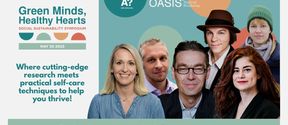
Find the original landing page here.
